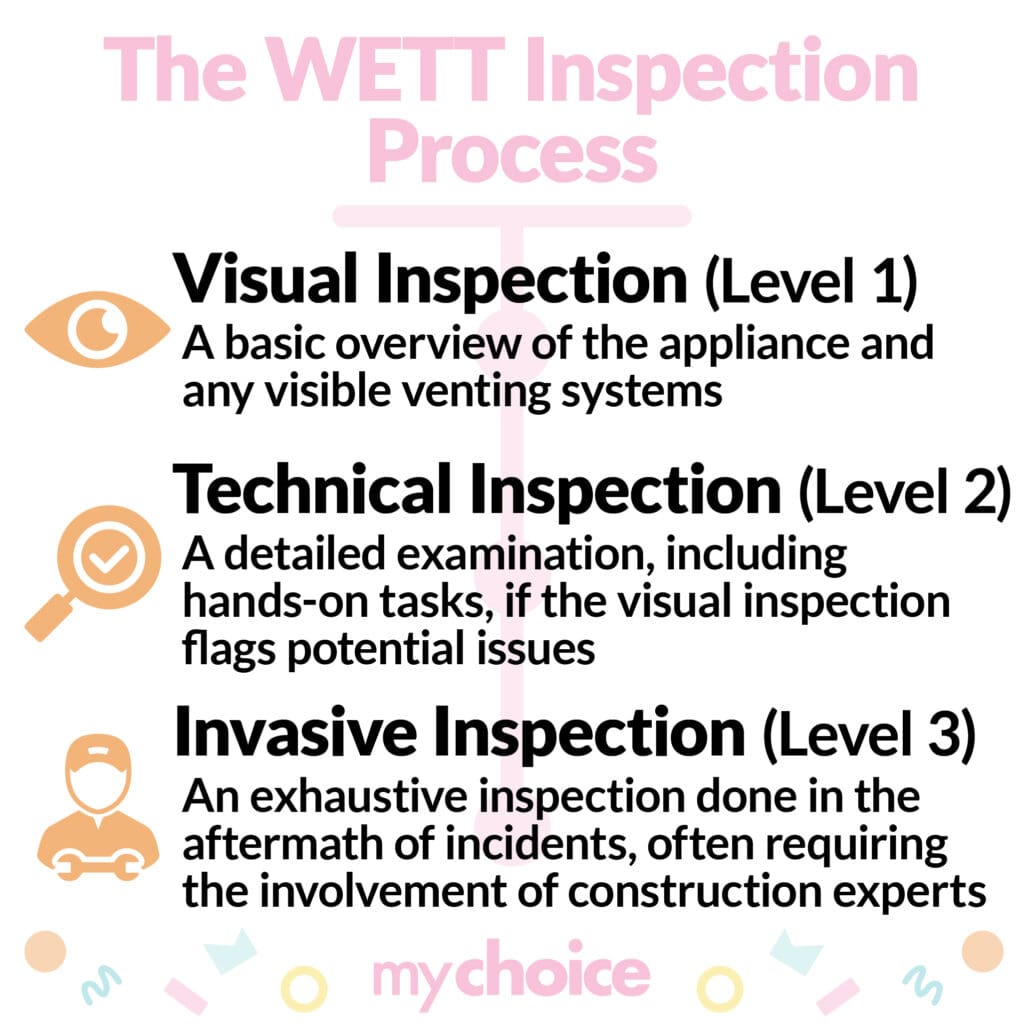A WETT (Wood Energy Technology Transfer) inspection is important for ensuring your home’s wood-burning appliances are operating properly. Whether you have a fireplace, a pellet stove, or a wood stove, these inspections can help you identify and fix issues to keep your house safe from potential fire hazards.
What factors do inspectors look at during the WETT inspection process, and why do these inspections matter? Read our guide to learn more about how certain factors affect reports and inspection costs, how long an inspection is good for, and how often you should get these inspections.
What Is a WETT Inspection?
A WETT inspection is a thorough check of a home’s wood-burning system and all its wood-burning appliances conducted by certified WETT inspectors. These inspections are important for homeowners and insurers for these reasons:
WETT Inspection Levels: What’s The Difference?
WETT inspections have three different levels, and an inspector needs the appropriate designation certificate to conduct a certain inspection, e.g. a level 3 certification for a level 3 inspection. Here’s a description of why each one is conducted and how they differ from the other levels:
| Level 1 (least comprehensive) | Level 2 | Level 3 (most comprehensive) |
|---|---|---|
| Visual inspection | Technical inspection | Invasive inspection |
| Conducted after changes to appliances, or for insurance or real estate purposes | Conducted if potential issues were spotted during a Level 1 inspection | Conducted if significant concerns have been raised or after an incident |
| This is a basic assessment of readily accessible, movable components of wood-burning appliances and their venting systems. | Apart from the basic assessment, inspectors may do more hands-on tasks like moving components that aren’t permanently attached. Inspectors may also use tools such as tape measures and magnets for a closer examination | This is the most invasive inspection level that examines components with concealed accessibility. It may not be possible to return components to their original position or condition after a level 3 inspection. Inspectors are allowed to use power tools and special tools like video scanning cameras. |
How Much Does a WETT Inspection Cost?
Various considerations will affect the cost of a WETT inspection, as these will affect the time and effort needed to complete it. Here are some:
WETT Inspection Checklist
WETT-certified inspectors will conduct a detailed assessment of your home’s wood-burning appliances and system. Here’s what certified inspectors will usually examine:

How Long Is a WETT Inspection Good For?
A WETT inspection report is only good for vouching for the condition of wood-burning appliances on the date and time of the inspection. After the report is completed and the inspector leaves the property, they won’t have any control over the wood-burning system or any changes made to it.
However, even if you don’t make changes to your wood-burning appliances, you should get WETT inspections done more often if:
- One or more wood-burning appliances in a home are used regularly.
- There was a recent incident like an earthquake or chimney fire.
- There are signs of problems or performance issues with one or more wood-burning appliances.
- The appliances are old and need more maintenance or have not been maintained properly.
Key Advice from MyChoice
- If you make any changes to your wood-burning appliances, it’s best to inform your home insurer and have a new WETT inspection conducted ASAP. Making changes poses a safety issue that affects a policy’s validity, and failing to inform your insurer can result in denied claims or even policy cancellation.
- Before a WETT inspection, clear any combustible materials near your wood-burning appliances and make sure they’re clean and free of debris.
- Follow up on any issues and recommendations in the WETT inspection report, such as repairs, cleaning, and necessary upgrades.








